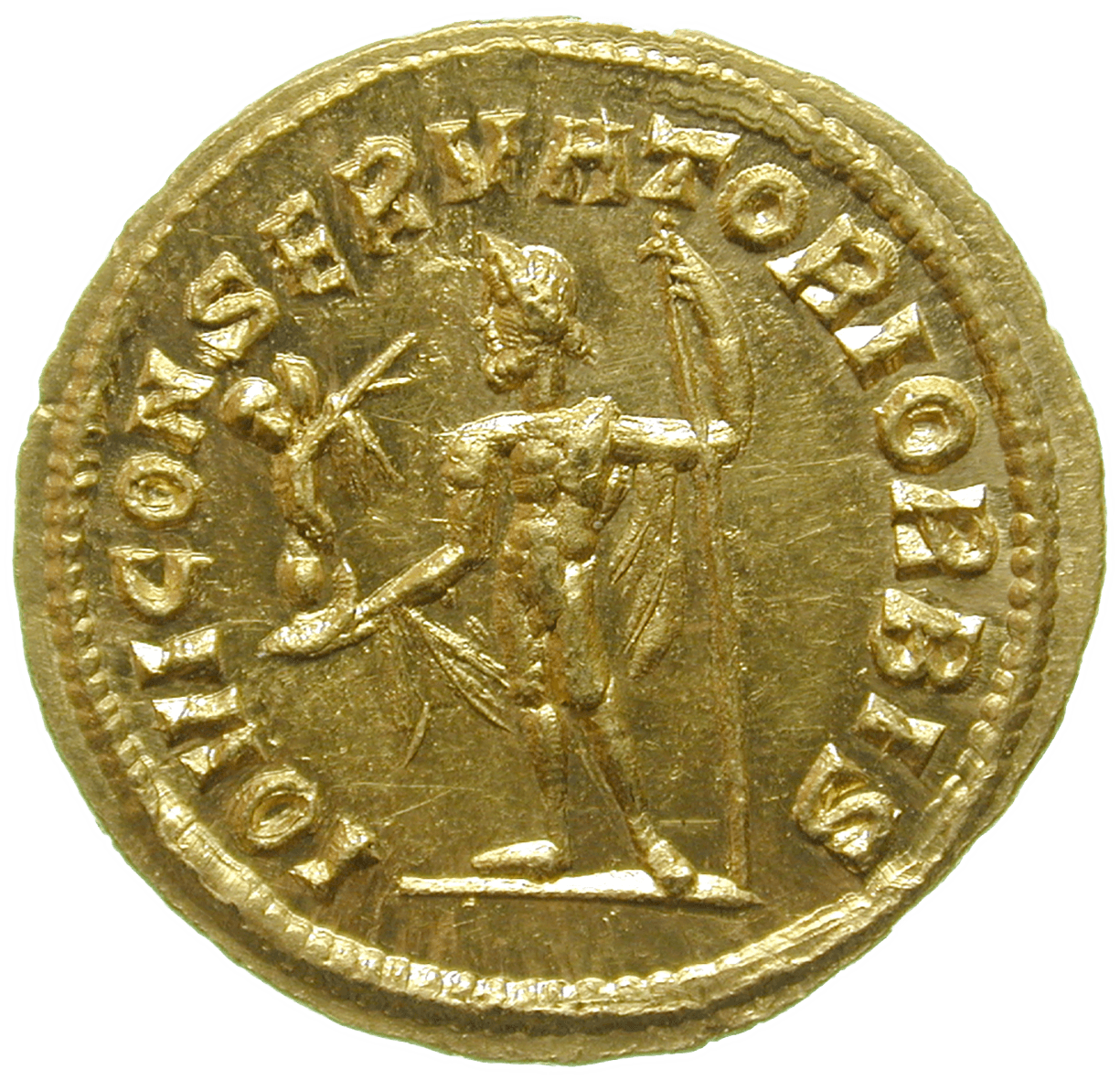Der Aureus war die Goldmünze des Römischen Reichs. Sie wurde in der Republikszeit eingeführt und bis zu Beginn des 4. Jahrhunderts n. Chr. geprägt. Anfänglich wurden Aurei allerdings nur selten ausgegeben: Erst das auf den Kriegszügen Cäsars erbeutete Gold ermöglichte eine reichhaltigere Prägung des Aureus.
Unter Kaiser Augustus wurde der Wert des Aureus auf 25 Denare (oder 100 Sesterze) festgelegt. Danach blieb er für 2 Jahrhunderte die relativ stabile Grundlage der prosperierenden Wirtschaft des Römischen Kaiserreichs. Doch ab dem Beginn des 3. Jahrhunderts setzten Gewichtsschwankungen dem Aureus immer mehr zu. Kaiser Diokletian (284-305), der auf diesem Aureus zu sehen ist, versuchte die Goldwährung noch einmal zu stabilisieren. Doch es war zu spät: während der Münzreform Kaiser Konstantins des Grossen (307-337) wurde der Aureus durch den Solidus ersetzt.
Der Aureus von Kaiser Diokletian zeigt auf der Rückseite den Jupiter mit einem Zepter und einer Statuette der Siegesgöttin Viktoria.

